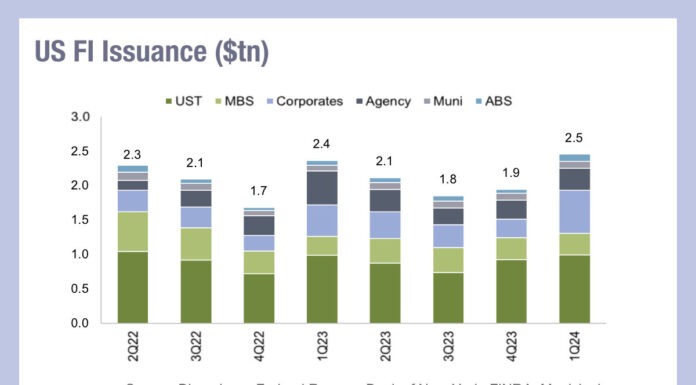
Asset managers are playing catchup in primary markets technology after banks invested heavily in automated book building, says Rahul Kambli, senior product owner at Genesis Global.
Accessing the primary market for corporate bonds can be lucrative for asset managers astute about pricing and credit quality. However, surveilling the market, tracking changes in terms for new issues and making investment decisions quickly enough are challenges for most buyside institutions. In partnership with a major global asset manager, Genesis Global developed a solution to help firms monitor the market, evaluate new deals and quickly communicate orders.
What are the challenges presented by primary bond markets?
Short pricing windows, which create time pressure to evaluate deals and communicate orders, is the key challenge. In part, this is driven by systems advances on the sell side. Syndicating banks have invested in technology for over 10 years to help them automate the book building process and reconcile the data they require for processing client orders with tools like Ipreo, DirectBooks and traditional dealer-to-client networks like Bloomberg and Refinitiv.
Today, asset managers have only a couple of hours to decide whether to purchase new issues and this creates pressure to identify and evaluate the best opportunities and communicate orders rapidly.
How easy is it for firms to track new deals in the market?
Operating effectively in primary markets begins with surveillance and having confidence that the firm not only sees all the deals that come to market but also tracks key changes and updates to deal terms. While syndication tools like Ipreo have made some aspects of deal monitoring easier for asset managers, deal data are still transmitted through several platforms, making it hard to get a complete view of the market.
Moreover, different platforms can publish data at different times, making updates asynchronous and it’s not uncommon for 30 or more changes in terms to be communicated within the two- to four-hour window asset managers are provided to decide and transmit their level of interest in the deal. As a result, managing data is a significant hurdle.
How should an asset manager think about managing deal data?
Centralising new issue data is core to improving performance and efficiency. Beyond consolidating data from the multiple channels used by syndicating banks into one real-time view of the market, a centralised approach can also normalise deal data, based on the asset manager’s preferences, to overcome the multiple channel-specific data formats and conventions in the market today. It’s important to reconcile how different channels treat data and labels for issuer name, identifiers used and key terms like call dates, maturity and currency, in order to create a single, standardised environment for deals data.
In addition, aggregating deal data can compensate for incomplete data arriving from different sources. When a new issue is broadcast over two or more networks, the central system can consolidate information and present the most comprehensive view possible, creating a golden file from multiple inputs.
Success, then, is more than data aggregation, it’s data enrichment.
How do firms identify the deals most relevant to them?
We estimate that 40 new deals, on average, hit the market each day. It’s a lot to track, compounded by the fact that terms to each deal are typically updated at least 30 times. The ability to filter out the noise is a critical benefit of consolidating new deal data and screening tools can filter data and deliver only relevant information to portfolio managers, credit analysts and traders.
Depending on the portfolio strategy, screening tools can allow users to specify the deals they want to consider, based on size, rating, currency, industry, ESG factors, etc. For updates to deal terms, the system can filter for only the terms that have changed and update the master deal view, accordingly. This helps asset managers focus on what’s important to them amid a torrent of information in the market.
What can asset managers do to speed up investment decision making on new deals?
Minimising friction between systems and switching between platforms is crucial to improving efficiency. A modern approach creates a purpose-built new deal environment that integrates analytics, compliance and trading to accelerate decision making and the process of placing orders. With one workspace for data, analytics and trading, investment teams can see everything in one place and no time is lost going from one system to another, entering data and, potentially, creating errors and risk. For example, connecting to the asset manager’s internal analytics engine brings together deal and issuer data and new issue curves can be generated using internal data combined with what’s being communicated by the syndicate.
Similarly, integrating trade and compliance systems can streamline how orders are created, reducing manual entry and the potential for errors. In creating orders, fields can be autofilled from the centralised data and compliance checks can be completed automatically. After orders are communicated to the bookrunners, allocation fills data can flow into both the OMS and the new issue management system accessible to the entire investment team.
What else do firms need to do to optimise how their teams approach primary markets?
With data, analytics and order systems unified, embedding workflow and collaboration tools like Symphony or Teams is the final element of speeding up investment decision making involving portfolio managers, credit analysts and traders. With electronic workflow, handoffs can happen automatically and alerts can be generated to trigger further actions, reviews and approvals, maximising the efficiency achieved by investment teams. Communication can be embedded throughout the workflow, keeping the data, discussion and decision making history together in one, auditable environment that facilitates speed and compliance.
How complex is it for asset managers to build the system you describe?
Integrating multiple data sources and internal systems for analytics, compliance and trading is the most complicated aspect of designing a modern system for primary markets investing. The Genesis software application development platform excels at this type of work and we built a solution for our first primary markets client in around four months.
We think automation on the sell side has raised the stakes for investment firms and ending this technology asymmetry should be a priority for asset managers seeking to maximise their effectiveness in primary markets for bonds. With only a few short hours to make decisions before syndicate books are closed, centralising data and connecting systems into a unified, deal-focused environment presents a valuable opportunity for asset managers to create not only efficiency, but also competitive advantage through better market surveillance, deal selection and speed to request allocations.
©Markets Media Europe 2023




















